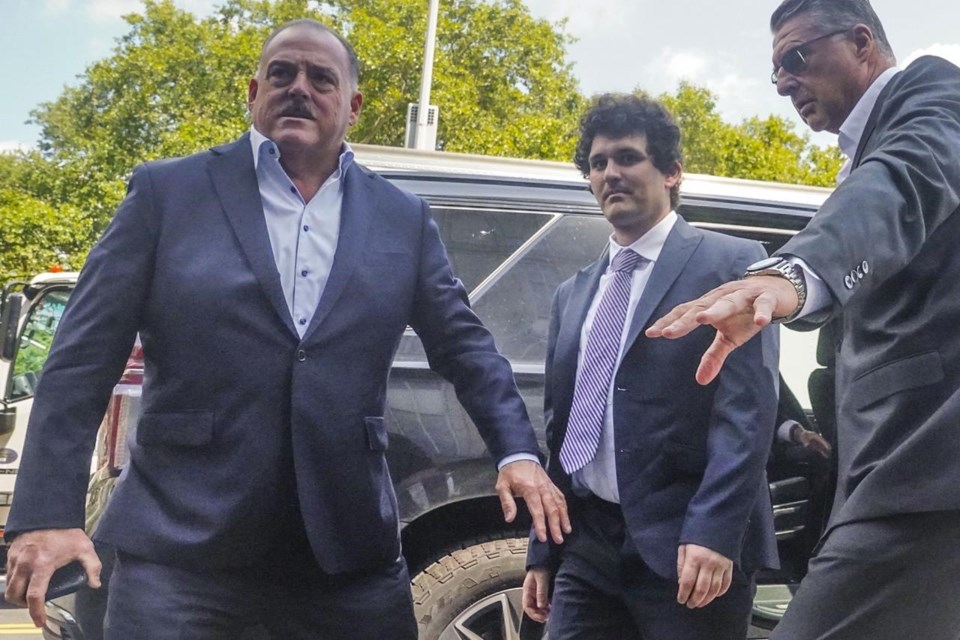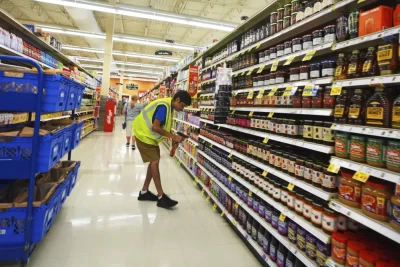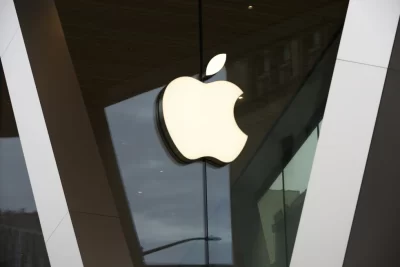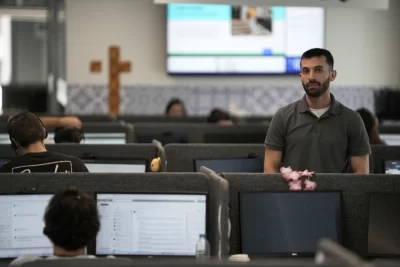
For a while, Sam Bankman-Fried tried to convince politicians and the public that he was the next J.P. Morgan. Now, he has to convince a jury that he wasn’t, in reality, the next Bernie Madoff.
The trial of Bankman-Fried, the founder of the failed cryptocurrency brokerage FTX, will begin Tuesday with jury selection. Prosecutors from the Southern District of New York are expected to lay out a case against Bankman-Fried that shows he stole billions of dollars in FTX customer deposits and used the money to fund his hedge fund, buy real estate, and make millions of dollars of illegal campaign donations to Democrats and Republicans in an attempt to buy influence over cryptocurrency regulation in Washington.
While the case will involve the complicated world of cryptocurrencies, prosecutors are expected to try to boil it down to the simplest of terms for jurors: Bankman-Fried took money from customers and used it in ways he wasn’t supposed to.
“Prosecutors are going to say, ‘look at where the money went and how it was spent,’” said Michael Zweiback, co-founder of the law firm Zweiback, Fiset, & Zalduendo LLP, and a former federal prosecutor. “This case is less about the complicated investments and all about garden-variety fraud.”
Before FTX collapsed and filed for bankruptcy last November, Bankman-Fried was one of the most powerful people in the cryptocurrency industry. “SBF” had an estimated net worth of $32 billion last year, at least on paper. He interacted with former presidents, politicians on both sides of the aisle, celebrities, and CEOs. When smaller crypto firms started imploding in early 2022, Bankman-Fried told the public he would help prop up the market, prompting the comparisons with J.P. Morgan.
Bankman-Fried and his inner circle of executives ran their then-growing crypto empire from The Bahamas, out of the luxury apartment complex Albany, where celebrities like Tiger Woods and Justin Timberlake have vacation homes.
FTX had effectively two lines of business: a brokerage where customers could deposit, buy, and sell cryptocurrency assets on the FTX platform, and an affiliated hedge fund known as Alameda Research, which took highly speculative positions in various cryptocurrency investments. As Alameda started to pile up losses during last year’s cryptocurrency market declines, prosecutors allege Bankman-Fried directed funds to be moved from FTX’s customer accounts to Alameda to plug holes in the hedge fund’s balance sheet.
The house of cards that Bankman and his lieutenants built came crashing down in early November, when reports surfaced about the condition of Alameda’s balance sheet. Spooked investors, who had already seen several crypto firms collapse during the year, quickly pulled their money out of FTX and within days the firm was bankrupt.
John Ray III, the restructuring expert who was tasked with cleaning up FTX in bankruptcy, described the conditions inside of FTX as worse than Enron, long considered the benchmark for corporate malfeasance in popular culture.
Bankman-Fried is expected to come face-to-face with his former lieutenants at FTX for the first time since its collapse. Several of them have agreed to plead guilty to lesser crimes in exchange for testifying against him. This includes Caroline Ellison, who was the CEO of Alameda and Bankman-Fried’s off-and-on girlfriend, as well as FTX co-founder Gary Wang.
Ryan Salame, another top executive at FTX, pleaded guilty on Sept. 7 to making illegal campaign contributions to Republicans on behalf of Bankman-Fried, who was publicly making contributions to Democrats. It is not known whether Salame will testify against Bankman-Fried.
Ellison is expected to be the prosecution’s central witness. Prosecutors are likely to count on her to demonstrate that the collapse of FTX was not due to a few mistakes, as Bankman-Fried alleges, but to fraud. She has previously said in a statement through her lawyers that she knew funneling FTX customers’ money into Alameda was wrong.
“I expect the government is going to be able to show that Bankman-Fried knew what he was doing was wrong, and here are the people in the room who can corroborate that story,” said Christine Adams, a former federal prosecutor and a partner at Adams, Duerk & Kamenstein.
The defense is expected to argue that while Bankman-Fried made some mistakes, the mistakes do not amount to fraud and FTX was just the latest casualty in the broad collapse of the cryptocurrency market last year. Until he had his computer privileges taken away by the presiding judge in the case, Bankman-Fried himself spent months reaching out to reporters and posting on social media to explain his actions.
“Look, I screwed up,” he said in a remote interview with The New York Times’ Andrew Ross Sorkin late last year.
Bankman-Fried was extradited from The Bahamas to New York in December. Before his bail was revoked, Bankman-Fried had been permitted to live with his parents in their Palo Alto, California, home with strict rules limiting his access to electronic devices. Bankman-Fried was ordered to be jailed after Judge Lewis A. Kaplan said there was probable cause to believe he was trying to tamper with potential witnesses, including Ellison, in the case.
Broadly, the crypto industry has still not recovered since FTX’s collapse. The price of Ethereum and Bitcoin, the two most widely used cryptocurrencies, are still down two-thirds from where they were a year ago and the volume of trading in crypto is half what it was. The market for NFTs, artificially scarce digital objects meant to create unique digital versions of memorabilia or photographs, has all but evaporated. Roughly 3,000 NFTs trade hands daily now, compared to more than 40,000 a day a year ago, according to NonFungible.com.
Even Bankman-Fried’s former competitors are facing their own legal scrutiny. This summer the Securities and Exchange Commission brought charges against Binance and its founder Changpeng Zhao similar to the allegations against FTX, including commingling of customer funds with the firm’s investments. Coinbase, the publicly traded crypto exchange, has also been charged by the SEC with securities violations.
___
AP Reporter Larry Neumeister contributed to this report from New York.






